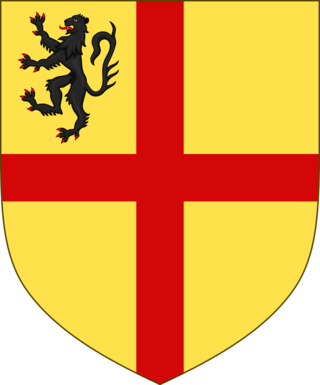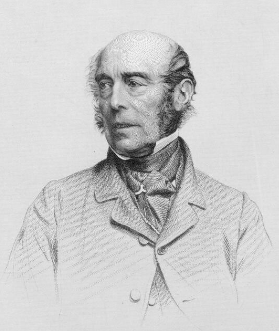
Viscount Galway is a title that has been created once in the Peerage of England and thrice in the Peerage of Ireland. The first creation came in the Peerage of England in 1628 in favour of Richard Burke, 4th Earl of Clanricarde. He was made Earl of St Albans at the same time. The second creation came in the Peerage of Ireland in 1687 in favour of Ulick Bourke. He was made Baron Tyaquin at the same time, also in the Peerage of Ireland. However, both titles became extinct on his early death in 1691. The third creation came in the Peerage of Ireland in 1692 in favour of the French soldier and diplomat Henry de Massue, Marquis de Ruvigny, who was created Baron Portarlington, also in the Peerage of Ireland, at the same time. He was made Earl of Galway in 1697. However, both titles became extinct on his death in 1720.

Earl of Clanricarde is a title that has been created twice in the Peerage of Ireland, first in 1543 and again in 1800. The former creation became extinct in 1916 while the 1800 creation is extant and held by the Marquess of Sligo since 1916.

Sir Uilleag (Ulick) de Burgh (Burke), 1st Clanricarde or Mac William Uachtar was an Irish chieftain and noble who was leader of one of the three factions who fought the Burke Civil War in the 1330s. By the end of the conflict he had established himself and his descendants as Clanricarde, also known as Mac William Uachtar, independent lords of Galway. He was succeeded by his son, Richard Óg Burke, 2nd Clanricarde (d.1387).

Ulick John de Burgh, 1st Marquess of Clanricarde, styled Lord Dunkellin until 1808 and The Earl of Clanricarde from 1808 until 1825, was a British Whig politician who served as British Ambassador to Russia (1838–40), Postmaster General (1846–52) and Lord Keeper of the Privy Seal (1858).
Richard Burke, 4th Earl of Clanricarde was an Irish nobleman and politician.
General John Thomas de Burgh, 13th and 1st Earl of Clanricarde PC (Ire), styled The Honourable until 1797, was an Irish peer and soldier who was Governor of County Galway (1798–1808) and a member of the Privy Council of Ireland (1801).
William Power Keating Trench, 1st Earl of Clancarty was an Irish aristocrat and politician and later United Kingdom statesman at the time of the Act of Union. His family, through his son Richard, became prominent and hereditary members of the Netherlands' nobility.
Ballymore Castle in Lawrencetown, County Galway, Ireland was originally a 15th-century tower house belonging to O'Madden. A house was added in 1620, and the castle has been much altered since then.

Theobald Dillon, 7th Viscount Dillon of Costello-Gallin supported King James II, was attainted on 11 May 1691, and fell in the Battle of Aughrim during the Williamite War. His attainder was reversed in favour of the 8th Viscount on 20 June 1694.

Henry Dillon, 8th Viscount Dillon was an Irish soldier and politician. In 1689 he sat in the Patriot Parliament. He fought for the Jacobites during the Wiiliamite War, defending Galway against Ginkel and surrendering it in 1691 after a short siege. He obtained the reversal of his father's attainder in 1696 recovering his father's lands.

William Burke, 7th Earl of Clanricarde, PC (Ire), was an Irish peer who fought in his youth together with his brother Richard, 6th Earl of Clanricarde under their cousin, Ulick Burke, 1st Marquess of Clanricarde against the Parliamentarians in the Cromwellian conquest of Ireland. He succeeded his brother as the 7th Earl in 1666.

John Burke, 9th Earl of Clanricarde ; 1642–1722) was an Irish soldier and peer who was a Colonel during the Williamite War in Ireland.
John Smith (Burke) de Burgh, 11th Earl of Clanricarde, styled Lord Dunkellin until 1726, was an Irish peer.
Sir Henry Lynch, 1st Baronet was an Irish baronet, knight, lawyer, and land agent. Lynch was among the first of his family to become a lawyer, and several of his younger sons followed him into this profession, as did, under his influence, Patrick D'Arcy, Richard Martyn, and Geoffrey Browne and many of the later generations of the Tribes of Galway.
John Lambert of Creg Clare was an Irish soldier and Royalist.

Honora Burke, married Patrick Sarsfield and went into French exile where he followed her soon afterwards. After his death at the Battle of Landen, she married James FitzJames, 1st Duke of Berwick, an illegitimate son of James II. She may have introduced the country dance to the French court.
Ulick Burke, 1st Viscount Galway was an Irish army officer slain at the Battle of Aughrim while fighting for the Jacobites during the Williamite War in Ireland.
Helen Burke, Countess Clanricarde, also styled Helen FitzGerald, was brought to France by her mother fleeing the Cromwellian conquest of Ireland, against which her father, the 2nd Earl Muskerry, resisted to the bitter end. In France, she was educated at the abbey of Port-Royal-des-Champs together with her cousin Elizabeth Hamilton. She married three times. All her children were by her second husband, William Burke, 7th Earl of Clanricarde. She was the mother of Ulick Burke, 1st Viscount Galway, Margaret, Viscountess Iveagh, and Honora Sarsfield.
Margaret Magennis, Viscountess Iveagh, also known as Margaret Butler, was the mother of John Butler, the de jure 15th Earl of Ormond. She is remembered by the song A Lament for Kilcash.







